Compared with the previous generation X4, Insta360 X5 shows a significant improvement in SD card writing efficiency. Tests reveal that under the same shooting settings, the X5 produces files that are about 20% smaller than those from the X4. This translates into longer recording times and less reliance on ultra-high-capacity cards. Drawing on my three years of hands-on experience with panoramic cameras, this review will focus on cost-effectiveness and practical convenience, providing a practical guide and recommendations for choosing the right SD card for the X5—helping you quickly pick the most suitable option while boosting both shooting efficiency and backup management.
- What capacity memory cards are supported on the Insta360 X5?
- 64GB–512GB: Which capacity should you choose?
- What should I know when buying a microSD card? (Brand Recommendations for Insta360 Cameras)
- Why shouldn’t you use a cheap microSD card for your Insta360 camera?
First of all, here are three key points you need to know before purchasing an SD card for the Insta360 X5:
- What capacity memory cards can be used on the Insta360 X5?
- What’s the difference in recording capacity between the Insta360 X5 and X4?
- Do you need to subscribe to Insta360+?
Best SD Memory Card Capacity for Insta360 X5
First, let’s take a look at the SD card capacities that are compatible with the Insta360 X5.
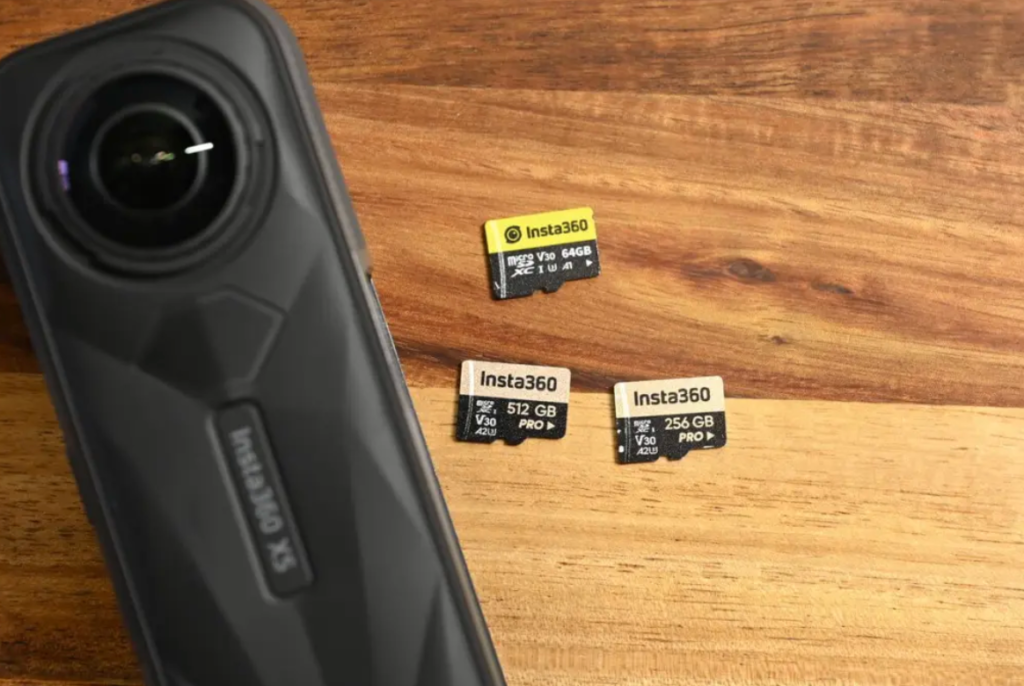
To get straight to the point, my top recommendation for the X5 is to use SanDisk “Extreme” series SD cards or the official Insta360 memory card. Please note that SanDisk’s entry-level series is “Ultra”, not “Extreme.”
The main difference between the Extreme and Ultra series lies in their read/write speeds. According to Insta360’s official guidelines, SD cards compatible with the X5 should have a speed rating of at least “V30” or “U3”, which makes the Extreme series a far more reliable choice.
Recommended: UHS-I microSD cards with a V30 speed class or higher, formatted in exFAT (FAT64), with a maximum storage capacity of up to 1TB.
X5 Official Service and Support
The SanDisk “Ultra” series is cheaper, so many people may consider buying it. However, its specifications fall below the required standard, and it cannot guarantee that panoramic video will be written correctly 100% of the time
Some reviews suggest choosing V30 speed class or higher for 4K recording, and V90 speed class or higher for 8K recording. However, since the X5 features an automatic file size reduction function, a V30 speed class SD card or higher is already sufficient.
- Speed Class: V30 and above
- The transfer speed is UHS-I
- Maximum storage capacity: 1TB
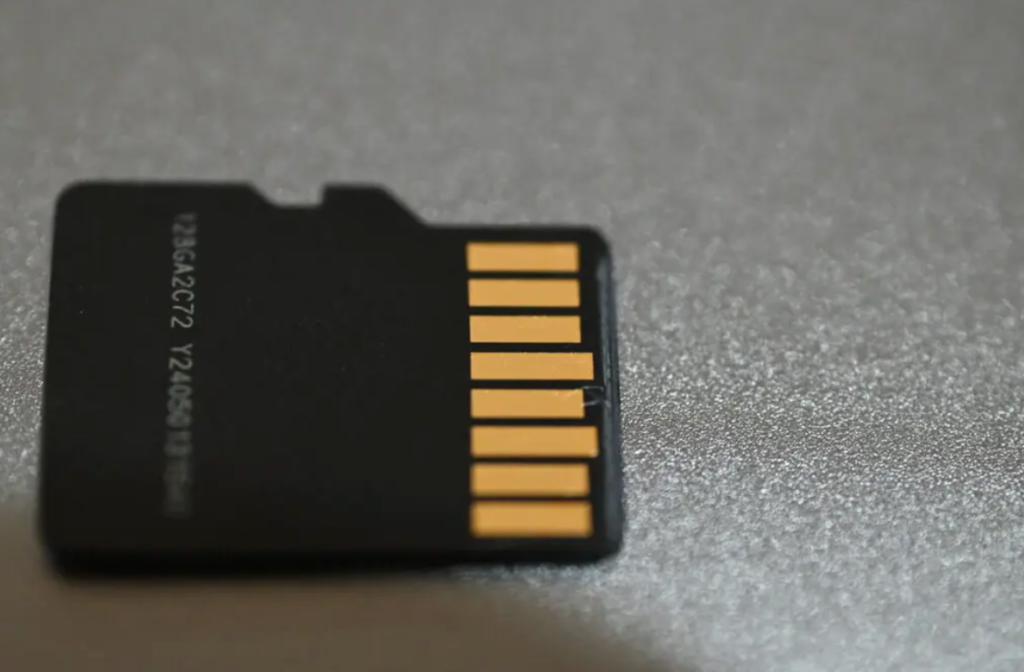
It is important to note that UHS-II cards are not compatible with the Insta360 X5.
Differences between Insta360 X5 and X4 in terms of Video Reading and Writing
One important improvement of the X5 is worth highlighting. The new generation comes with a built-in video compression feature, which allows for about 20% more storage capacity compared to the X4, even at 8K resolution. With smaller file sizes and reduced bitrates, this not only saves storage space but also greatly enhances post-production editing speed and efficiency.
| X5 | X4 | |
|---|---|---|
| 1-Minute Video File Size | 1.2GB | 1.5GB |
| bitrate | 120Mbps | 150Mbps |
| 30-Minute Video File Size | 28.4GB | 34.4GB |
Under the same conditions, when recording a 30-minute 8K video, it was found that the file size of footage captured by the X4 is 1.21 times larger than that of the X5.
When shooting with the X5, you not only save a great deal of storage space but also enhance video transfer and editing efficiency. I see this as a highly commendable technological breakthrough—one that brings tremendous value to creators who pursue both high-quality visuals and efficient workflows.
Subscribe to Insta360+
Insta360+ offers cloud storage plans ranging from 200GB to 2TB. Whether or not to subscribe to a paid cloud plan is something worth considering before purchasing the camera. Even with just 200GB of cloud space, you can reduce your reliance on large-capacity SD cards to some extent, potentially saving on the cost of buying higher-capacity cards.
Compared to 64GB or 128GB, my personal recommendation is that a 256GB SD card is generally more suitable for the X5 when filming during a 2–3 day short trip. Even if you plan to subscribe to cloud storage, I would still suggest getting a 256GB SD card, as it strikes the right balance between storage capacity and flexibility of use.
How to Choose Between 64GB, 128GB, 256GB, and 512GB?
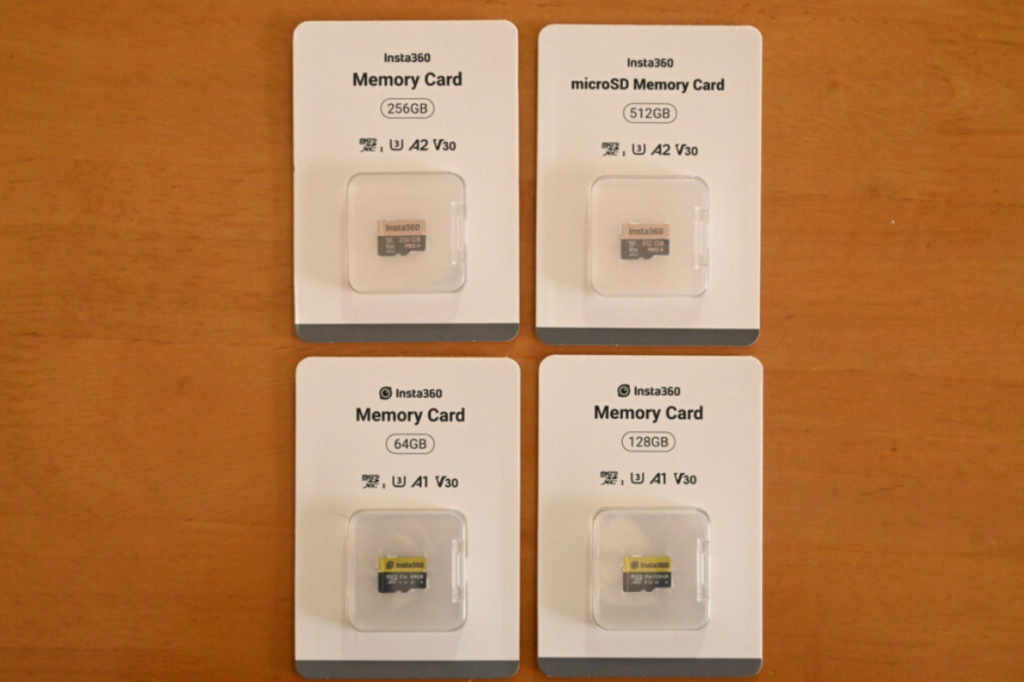
The X5 supports memory cards ranging from 64GB to 512GB. The table below summarizes the recording time for each capacity for easy reference. If you only shoot occasionally or mainly short clips, a capacity of 64GB to 128GB will be sufficient for daily use. However, if you often record in high resolution for extended periods (such as 5.7K panoramic videos, dashcam use, or travel vlogs), we recommend choosing 256GB or 512GB to avoid frequent card changes or interruptions during recording.
| 64GB | 128GB | 256GB | 512GB | |
|---|---|---|---|---|
| Price | $15 | $24.99 | $29.99 | $54.99 |
| 8K30fps (5.7K60fps) | 61m | 2h03m | 4h07m | 8h27m |
| 5.7K + 30fps | 1h29m | 3h00m | 6h00m | 12h18m |
| 5.7K30fps | 1h41m | 3h22m | 6h46m | 13h53m |
| 4K60fps (single lens mode) | 2h03m | 4h07m | 8h15m | 16h55m |
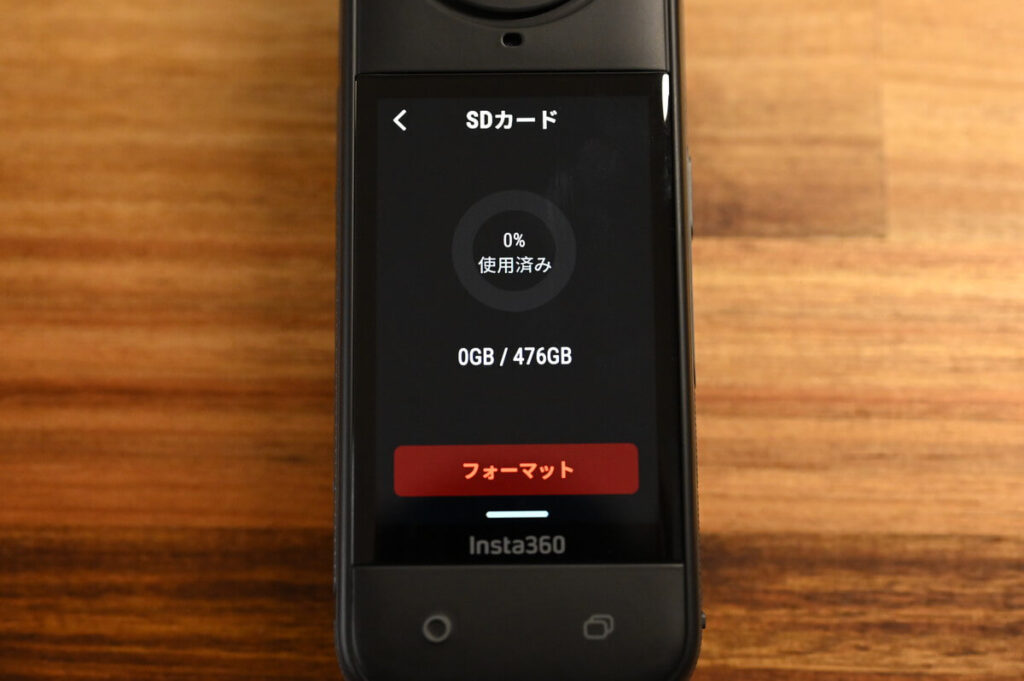
One important thing to note is that the actual usable capacity of a standard SD card is about 10% less than its labeled size, meaning only around 90% is available. This is a characteristic of SD cards and not a system error, so there’s no need to worry. Next, I’ll evaluate the recording times of different SD card capacities based on various video resolutions.
8K 30fps Recording
| Battery Life | 64GB | 128GB | 256GB | 512GB | |
|---|---|---|---|---|---|
| X5 (8K30fps) | 1 hour 25 minutes | 61m | 2h03m | 4h07m | 8h27m |
| X4 (8K30fps) | 1 hour 15 minutes | 50m | 1h40m | 3h20m | 6h51m |
Performance at 8K 30fps: The Insta360 X5, with its 2400mAh battery, can record continuously for 1 hour 25 minutes. Compared to the X4, the X5's Video Slim feature allows longer recording times under the same conditions, improving both battery life and storage efficiency.
64GB microSD card
| X5 Battery Life | 64GB microSD memory card for video storage capacity | |
|---|---|---|
| X5 (8K30fps) | 1 hour 25 minutes | 61 minutes. |
64GB SD Card: Not enough for a full battery cycle; not recommended even for Insta360+ subscribers.
128GB SD Card: Good for casual shooting and short trips; may need occasional swaps for 8K recording.
256GB SD Card: Ideal for 2–3 day trips or high-resolution 8K/5.7K videos; balances storage and flexibility.
512GB SD Card: Best for professional or long-duration shoots; ensures uninterrupted recording and maximum storage efficiency.
128GB microSD card
| X5 Battery Life | 128GB microSD memory card for video storage capacity | |
|---|---|---|
| X5 (8K30fps) | 1 hour 25 minutes | 2 hours and 3 minutes |
When shooting with a 128GB SD card on the Insta360 X5, approximately 25% of the card’s capacity remains once the battery is fully depleted.
Although a 128GB SD card can theoretically store around 2 hours of footage, in my real-world experience this capacity is actually just “barely enough.” This is especially true since the Insta360 X5 supports fast charging and can be paired with the optional Battery Base accessory, which greatly extends shooting time—meaning you’ll likely record longer and more frequently.
If you’re shooting during a 2–3 day trip, a 128GB SD card will likely fill up quickly. This means you’ll need to frequently organize, delete, or back up files, which is not only inconvenient but may also cause you to miss real-time shooting opportunities. Therefore, if you plan on long-duration shooting or multi-day travel recordings, it is recommended to choose a 256GB or larger SD card to ensure a worry-free and more enjoyable shooting experience.
256GB microSD card
| X5 Battery Life | 256GB microSD memory card capacity for video storage | |
|---|---|---|
| X5 (8K30fps) | 1 hour 25 minutes. | 4 hours, 7 minutes. |
Although 256GB offers twice the capacity of 128GB, the price difference is minimal. A 256GB SD card for the Insta360 X5 can handle roughly three full battery cycles, providing plenty of space for extended 8K or 5.7K recording sessions and meeting the needs of most creators.
It’s worth noting that the Insta360 X5 Standard Bundle and Essentials Bundle come with a 256GB SD card, emphasizing it as the officially recommended capacity. Considering both storage size and value, a 256GB microSD card is the ideal choice for Insta360 X5 users.
512GB microSD card
| X5 Battery Life | 512GB microSD memory card capacity for video storage | |
|---|---|---|
| X5 (8K30fps) | 1 hour 25 minutes | 8 hours and 27 minutes. |
A 512GB SD card lets the Insta360 X5 record over 8 hours at 8K, but due to the high cost and frequent stock shortages, I still recommend a 256GB SD card as the best balance of storage and value.
However, for users who don’t plan to subscribe to Insta360+ cloud storage and need to manage a large number of video files in one place, a 512GB SD card is an excellent choice.
5.7K + 30fps Recording
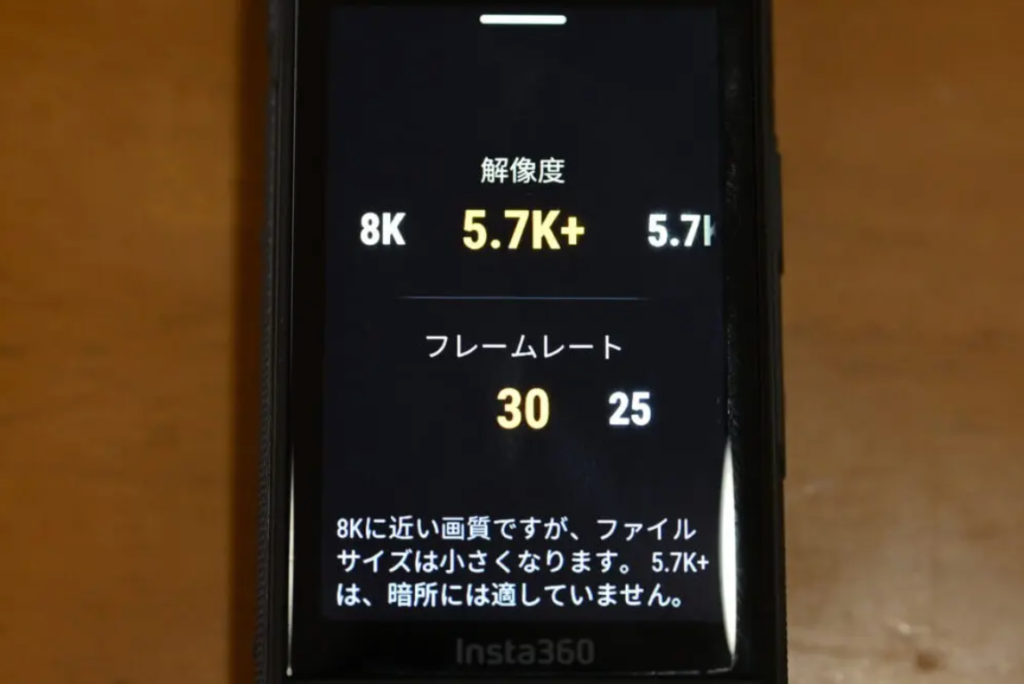
| 64GB | 128GB | 256GB | 512GB | |
|---|---|---|---|---|
| 5.7K+ | 1h29m | 3h00m | 6h00m | 12h18m |
The X5’s 5.7K+ setting delivers near-8K quality with smaller file sizes, making it highly practical. For frequent 5.7K+ use, a 128GB SD card is usually enough, though the excellent value of a 256GB card makes it an appealing choice.
Thoughts after 1 year of using Insta360 X4
With the X4, a 512GB SD card easily covered a full year of shooting. I mainly recorded cycling and travel vlogs, with clips from a few seconds up to 10 minutes for activities like skiing or long rides.


I’ve been using Insta360 cameras since the X3 and ONE RS era, and for over three years I’ve consistently relied on them to capture my daily life. I’m already very familiar with the placement angles of the selfie stick and the operating logic of 360 cameras, which allows me to clearly anticipate the final shot outcome. As a result, in most cases, I can complete my recordings in just a few seconds to a few minutes.
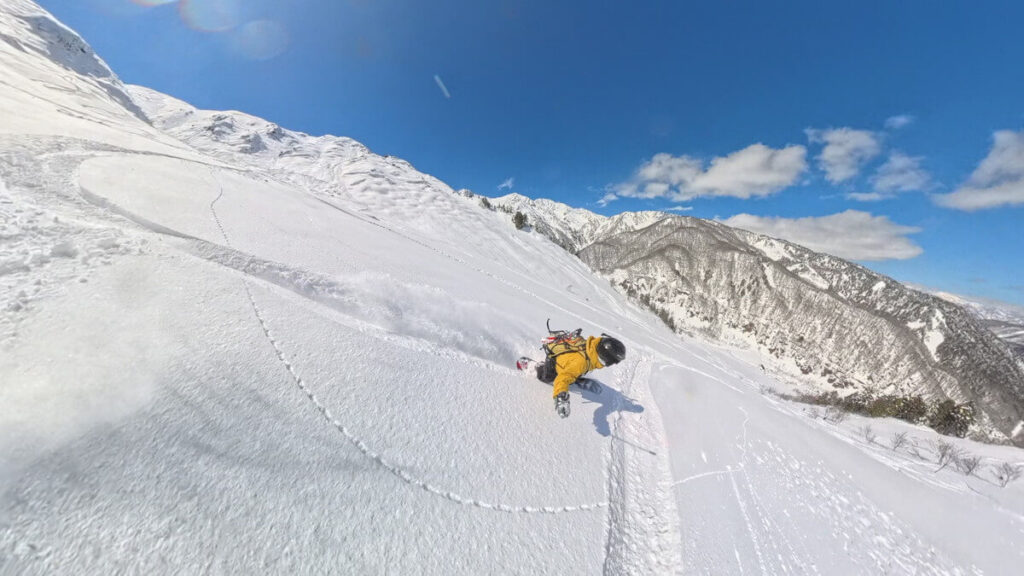
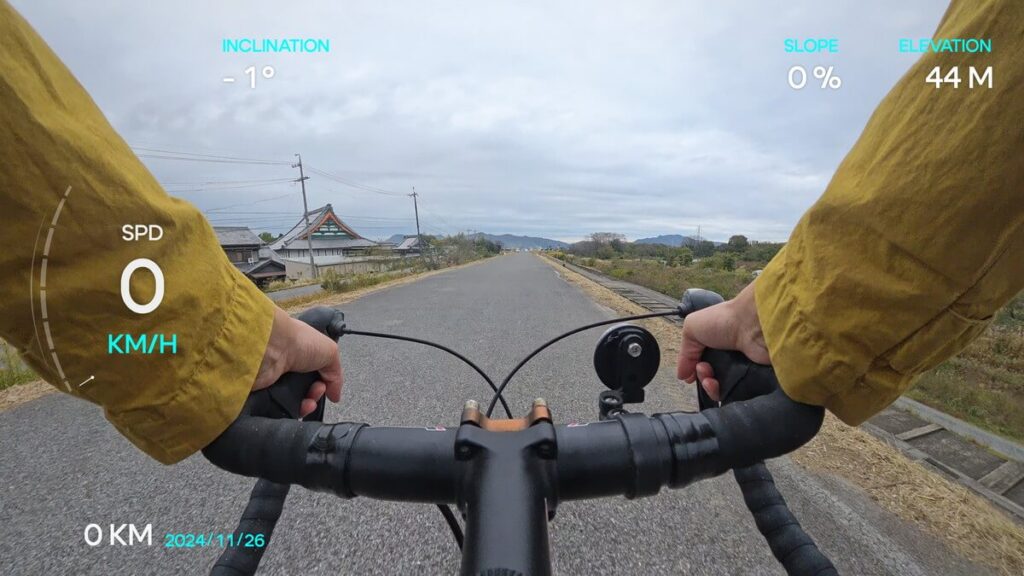
For longer activities like skiing or biking, I usually record about 10 minutes per clip, though motorcycle rides often run longer. I even produced a four-season video from Spring 2024 to Spring 2025 using the Insta360 X4, compiling a variety of clips.
By efficiently shooting and deleting footage, I managed to compress a full year of recordings onto a 512GB SD card. For those who don’t regularly clear their SD cards, I highly recommend subscribing to the Insta360+ cloud service.
Access your footage easily on a PC or smartphone, while keeping your SD card clutter-free. Organizing a full year of recordings centrally boosts editing efficiency and enhances the Insta360 360 camera experience.
Even if you don’t subscribe to the cloud service, as long as your data is saved on a PC or SSD, you can still edit it using desktop software. However, performing these tasks on a smartphone is more difficult.
How to Install SD Memory Card on X5
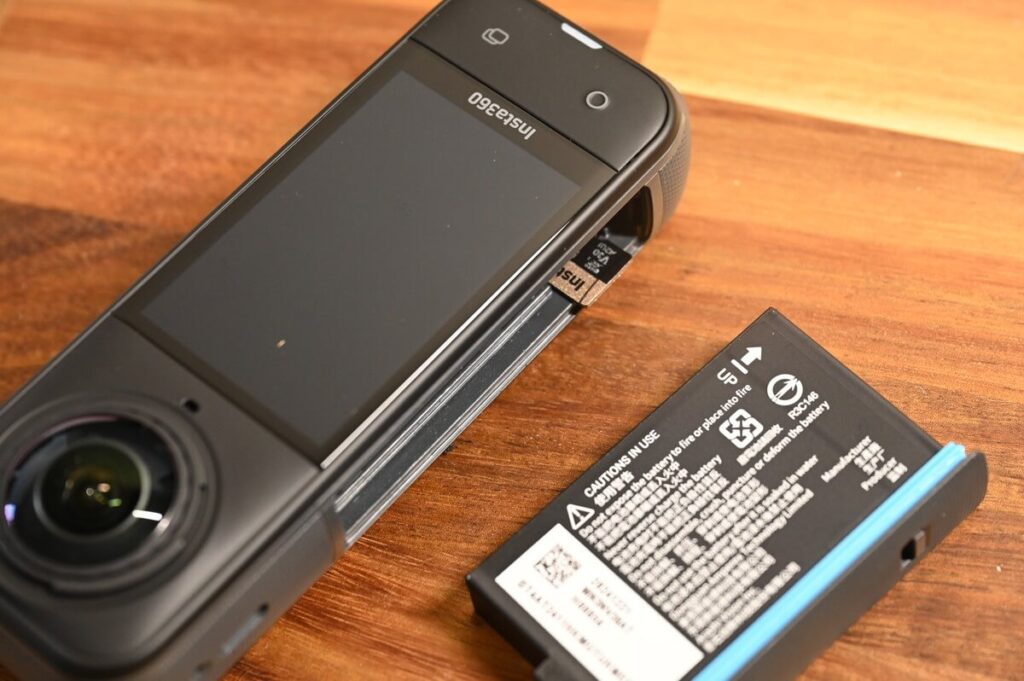
After removing the X5’s battery, insert the SD card until it clicks. To remove it, just press it again and it will pop out automatically.
microSD Memory Card FAQs
Is there a difference in the actual capacity of SD memory cards?
*Since the SD card is not only used to store the material, it also needs to reserve some space to store the buffer during the recording process, which takes up about 1-2GB.
X5 Official Service and Support
The actual usable capacity of an SD card is usually less than the labeled capacity. In general, an SD card’s usable space is about 90% of the manufacturer’s stated capacity.
Do I need to format the SD card periodically?
An SD memory card is a storage medium that undergoes frequent data writing and deletion. Compared to hard drives (HDDs) or solid-state drives (SSDs), which are mainly used for long-term storage, SD cards are more prone to generating “residual” or “junk” data during continuous recording and deleting. This can affect read/write efficiency and overall stability. It’s recommended to format your SD card regularly to clear out storage space, maintain optimal performance, and ensure smooth recording and safe data storage.
If you continue to use the device in an un-cleaned state, it may put a burden on the SD card and even affect the recording performance. According to Insta360's official recommendations, the X5's SD card should be formatted regularly to extend the SD card's lifespan and maintain long-term stable operation.
It is recommended to regularly transfer your camera files to a smartphone or computer for backup, and then format the camera’s internal storage to avoid potential storage errors.
Are there fake microSD cards for the Insta360 X5
Although Insta360 officially recommends buying official memory cards or SanDisk cards, many low-cost SD cards from other brands are on the market—so be aware that counterfeit cards are common. When purchasing, carefully check the printed markings on the card; genuine cards typically feature bolder, cleaner lettering. If you want to eliminate the risk of fakes entirely, the safest choice is to buy SD cards directly from Insta360’s official channels.
Conclusion
360° cameras and action cameras have different storage requirements. Some low-cost SD cards claim “Compatible with Ace Pro 2” or “Compatible with Insta360 action cameras,” but that does not guarantee they’ll work with the X4 or X5. Always read the product details carefully. Choosing the wrong SD card could prevent your important videos from being recorded properly — which would be a real shame 😭.
I personally once had a bad experience with a cheap memory card—while traveling abroad, one of the cards suddenly failed to save videos properly. To avoid this risk, I strongly recommend that when choosing an SD card for the X5, you stick with SanDisk or the official memory cards sold directly by Insta360.
You are welcome to place an order through the link of Insta360 website, the system will automatically give you a free gift according to the products you purchase, don't miss it!

Use this link to get a free gift, while stocks last.